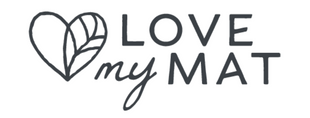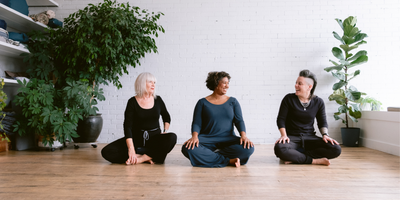What's the Best Yoga for Beginners?
Embarking on a journey into yoga can be both exhilarating and daunting, especially if you're new to the practice. With so many different styles and approaches to yoga, it's natural to wonder which one is the best fit for beginners. Whether you're seeking relaxation, flexibility, strength, or mindfulness, there's a yoga style out there for you. Before we explore some of the best options for those just starting their yoga journey, let's discuss what yoga beginners need.
What is Beginner Yoga?
Beginner yoga refers to yoga classes, sequences, or practices specifically designed for individuals who are new to yoga or have limited experience with the practice. We encourage you to find in-person or online classes that focus on introducing fundamental yoga poses, basic breathing techniques, and simple meditation practices in a supportive and accessible way.

What to look for in a beginner yoga class?
-
Introduction to Basic Poses: Beginner yoga classes often start with foundational poses such as Mountain Pose (Tadasana), Downward-Facing Dog (Adho Mukha Svanasana), Warrior Poses (Virabhadrasana I, II, III), and Child's Pose (Balasana). These poses help students develop strength, flexibility, and body awareness.
-
Focus on Alignment: Proper alignment is crucial in yoga to prevent injury and maximize the benefits of each pose. Beginner classes typically emphasize alignment cues and modifications using bolsters, blocks and other props to help students find the correct positioning in each pose.
-
Breath Awareness: Breathwork, or pranayama, is an essential aspect of yoga practice. Beginner classes often introduce simple breathing techniques, such as diaphragmatic breathing or ujjayi breath, to help students cultivate awareness of their breath and its connection to movement.
-
Props and Modifications: Props such as blocks, straps, bolsters and blankets may be used in beginner classes to support students in achieving proper alignment and make poses more accessible. Instructors often offer modifications for students with physical limitations or injuries.

-
Emphasis on Relaxation: Beginner yoga classes often include relaxation techniques such as Savasana (Corpse Pose) or guided meditation to help students unwind, reduce stress, and cultivate a sense of inner calm.
-
Supportive Environment: Beginner yoga classes are typically welcoming and non-intimidating environments where students can feel comfortable asking questions, using supportive yoga props, expressing concerns, and exploring their practice without judgment.

Overall, beginner yoga provides a solid foundation for individuals who are new to yoga or looking to refine their practice. It offers an opportunity to build strength, flexibility, and mindfulness while gradually developing a deeper understanding of yoga philosophy and its benefits for overall well-being. So...
What's the Best Yoga for Beginners?
Hatha Yoga
Vinyasa Yoga
Yin Yoga

Iyengar Yoga
Restorative Yoga

Kundalini Yoga
The real question is:
What is the Best Beginner Yoga for YOU?
Ultimately, the best yoga style for beginners is the one that resonates with you personally. Experiment with different classes and instructors to find a style that matches your preferences and goals. Remember that yoga is not a competition—listen to your body, honor its limitations, and approach your practice with curiosity and compassion. Whether you're seeking strength, flexibility, stress relief, or spiritual growth, the journey of yoga begins with a single breath.
We hope you try one or even all of these styles of yoga. If you have any questions about how to start your yoga journey or what props you need for each style, don't hesitate to reach out to us anytime. We love helping you find your favourite yoga prop!




